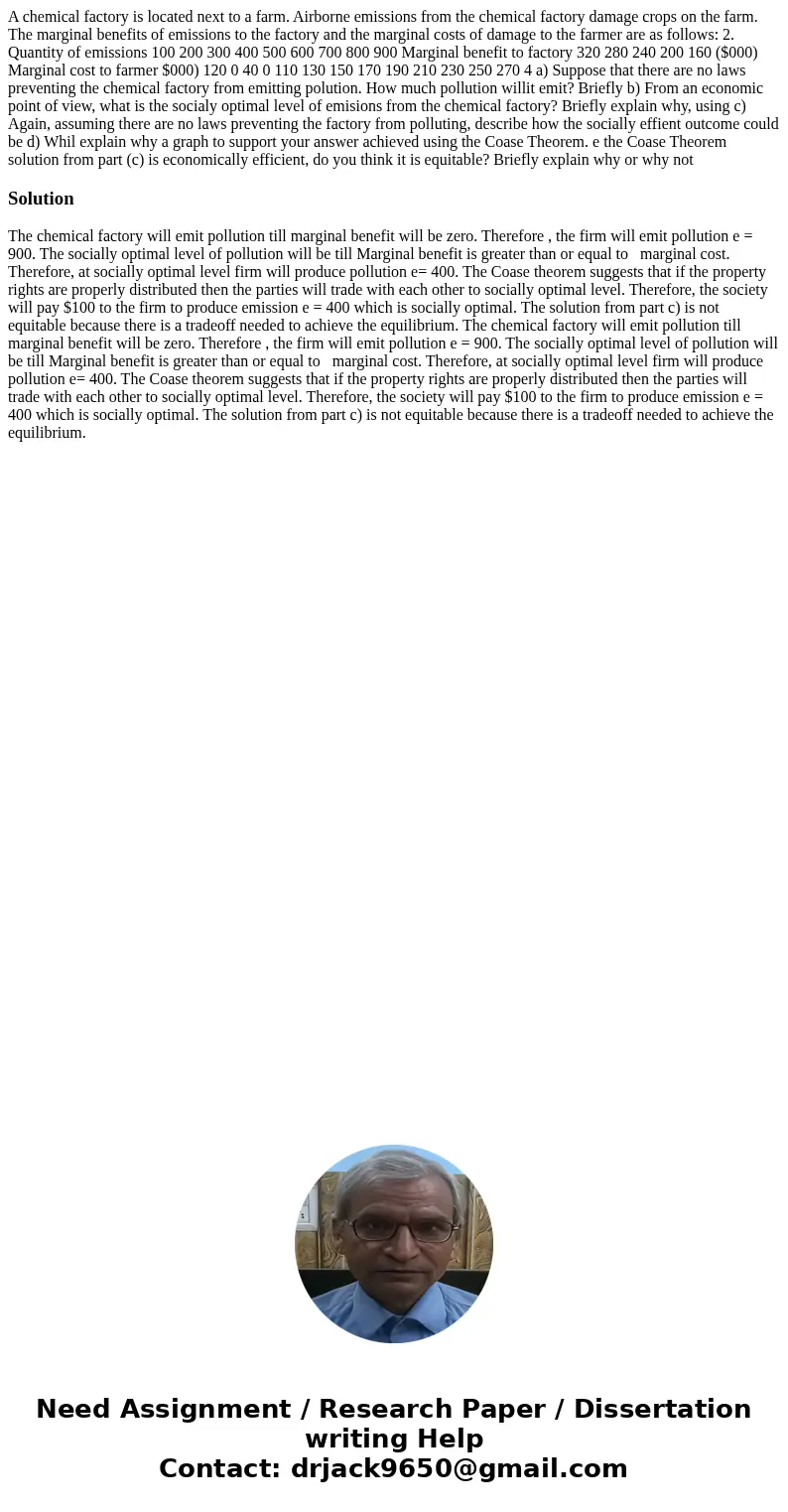A chemical factory is located next to a farm Airborne emissi
A chemical factory is located next to a farm. Airborne emissions from the chemical factory damage crops on the farm. The marginal benefits of emissions to the factory and the marginal costs of damage to the farmer are as follows: 2. Quantity of emissions 100 200 300 400 500 600 700 800 900 Marginal benefit to factory 320 280 240 200 160 ($000) Marginal cost to farmer $000) 120 0 40 0 110 130 150 170 190 210 230 250 270 4 a) Suppose that there are no laws preventing the chemical factory from emitting polution. How much pollution willit emit? Briefly b) From an economic point of view, what is the socialy optimal level of emisions from the chemical factory? Briefly explain why, using c) Again, assuming there are no laws preventing the factory from polluting, describe how the socially effient outcome could be d) Whil explain why a graph to support your answer achieved using the Coase Theorem. e the Coase Theorem solution from part (c) is economically efficient, do you think it is equitable? Briefly explain why or why not 
Solution
The chemical factory will emit pollution till marginal benefit will be zero. Therefore , the firm will emit pollution e = 900. The socially optimal level of pollution will be till Marginal benefit is greater than or equal to marginal cost. Therefore, at socially optimal level firm will produce pollution e= 400. The Coase theorem suggests that if the property rights are properly distributed then the parties will trade with each other to socially optimal level. Therefore, the society will pay $100 to the firm to produce emission e = 400 which is socially optimal. The solution from part c) is not equitable because there is a tradeoff needed to achieve the equilibrium. The chemical factory will emit pollution till marginal benefit will be zero. Therefore , the firm will emit pollution e = 900. The socially optimal level of pollution will be till Marginal benefit is greater than or equal to marginal cost. Therefore, at socially optimal level firm will produce pollution e= 400. The Coase theorem suggests that if the property rights are properly distributed then the parties will trade with each other to socially optimal level. Therefore, the society will pay $100 to the firm to produce emission e = 400 which is socially optimal. The solution from part c) is not equitable because there is a tradeoff needed to achieve the equilibrium.
 Homework Sourse
Homework Sourse